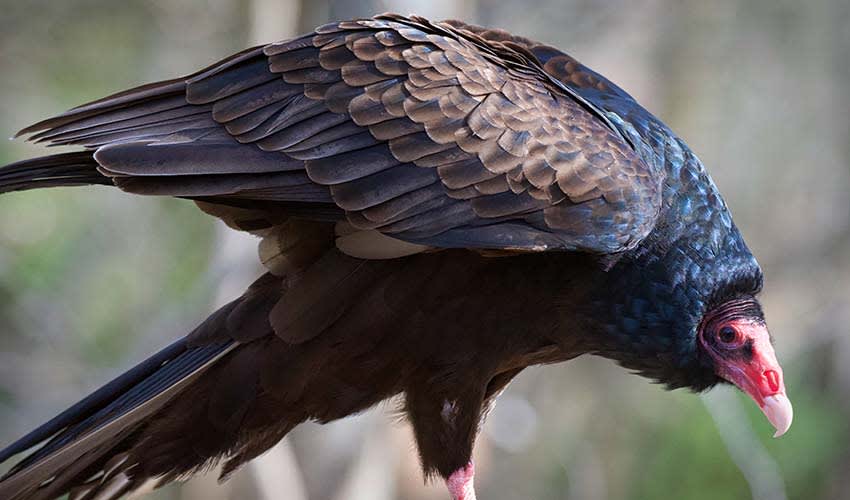Named for its bald, reddish head that resembles a turkey’s, this large, dark-feathered scavenger is an essential part of the ecosystem, quietly performing the dirty but vital job of cleaning up carrion. From the forests of Canada to the tip of South America, the turkey vulture can be seen gliding gracefully in wide circles, wings held in a shallow “V,” as it rides warm air currents in search of its next meal. Despite its ominous appearance, this bird is a peaceful, non-aggressive creature and plays a key role in controlling disease by disposing of dead animals.
What makes the turkey vulture especially unique is its incredible sense of smell—one of the best among all birds. While most birds rely almost entirely on sight to find food, the turkey vulture can detect the scent of rotting flesh from up to a mile away. This extraordinary ability helps it find hidden carcasses under dense forest canopies or in remote areas where other scavengers might miss them. Its nostrils are open all the way through, creating an efficient airflow that enhances its smell-detecting power. Because of this, turkey vultures are often the first scavengers to arrive at a dead animal, quickly followed by other species like black vultures, which often watch and follow them.
Turkey vultures defecate on their own legs to cool off and kill bacteria—a behavior called urohidrosis. They also have few natural predators, thanks to their ability to vomit foul-smelling, semi-digested food at would-be attackers as a defense. Despite their appearance, they are highly social, often roosting in large communal groups and even engaging in playful flight behavior. Their nests are simple—often just a hollow log, cave, or abandoned building—and the young are fed by regurgitation until they can fly.
Distribution
 Argentina
Argentina Aruba
Aruba Bahamas
Bahamas Belize
Belize Bermuda
Bermuda Bolivia
Bolivia Brazil
Brazil Canada
Canada Cayman Islands
Cayman Islands Chile
Chile Colombia
Colombia Costa Rica
Costa Rica Cuba
Cuba Dominican Republic
Dominican Republic Ecuador
Ecuador El Salvador
El Salvador Falkland Islands
Falkland Islands French Guiana
French Guiana Guatemala
Guatemala Guyana
Guyana Haiti
Haiti Honduras
Honduras Jamaica
Jamaica Mexico
Mexico Nicaragua
Nicaragua Panama
Panama Paraguay
Paraguay Peru
Peru Puerto Rico
Puerto Rico South Georgia
South Georgia Suriname
Suriname Trinidad & Tobago
Trinidad & Tobago Turks & Caicos
Turks & Caicos US Virgin Islands
US Virgin Islands United States
United States Uruguay
Uruguay Venezuela
VenezuelaAnything we've missed?
Help us improve this page by suggesting edits. Glory never dies!
Suggest an editGet to know me
Terrestrial / Aquatic
Altricial / Precocial
Polygamous / Monogamous
Dimorphic (size) / Monomorphic
Active: Diurnal / Nocturnal
Social behavior: Solitary / Pack / Herd
Diet: Carnivore / Herbivore / Omnivore / Piscivorous / Insectivore
Migratory: Yes / No
Domesticated: Yes / No
Dangerous: Yes / No




